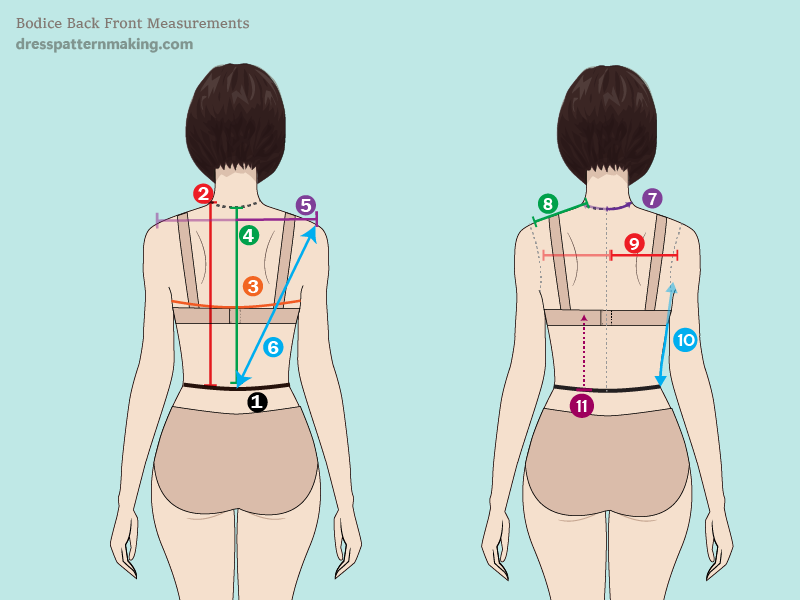Fit, Sizing & Measurements - The Fashion Industry & Garment Manufacturing
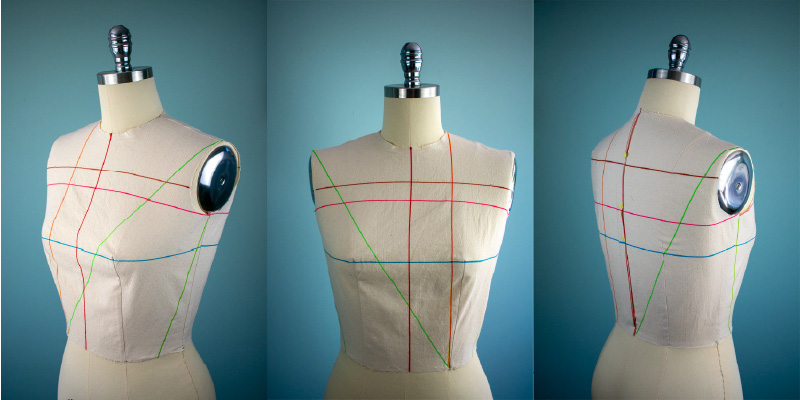
It is obvious to women who buy clothing - at least in Australia, the USA and the UK - that sizing is inconsistent across the clothing manufacturing industry. In Australia, you can be a Size 10 in one label, but a Size 8 in another, or even a Size 2 if the product was manufactured in the USA. In the USA the measurements for the bust of a Size 6 in ready to wear clothing equates to a Size 14 in a Commercial Sewing Pattern (e.g. Vogue, Butterick, McCall etc). That ready-to-wear (RTW) Size 6 mentioned above used to be a Size 14 (same as the Commercial Pattern size), but was down-sized to make women feel better about themselves; this has been termed "Vanity Sizing".
Many fashion labels also don't indicate what measurements their sizes are created for, some won't even share that information and keep it confidential. Online fashion stores cannot follow this practice for obvious reasons. Much has been made of this inconsistency in sizing, however, as far as I am concerned this inconsistency isn't such a bit deal. The important issue is Fit. A lot of women complain - whether the item is a Size 6 or 14 - it doesn't fit well. Even though it is theoretically made for their bust measurement, it may pull or be uncomfortable, be baggy or unflattering. When it's a matter of Fit, getting a bigger or smaller size does not solve the issue, it may even compound it. Fit is about both Measurements and Shape. Two women can have a 98cm bust with completely different body shapes if one has a B size Bust Cup and the other a DD Bust Cup. The pattern pieces of the garment for the woman with the DD Bust Cup would have a narrower Back Arc, it would be smaller in the Upper Bust, and have a bigger Bust Dart. Busts have been getting bigger since anthropometric data was first collected, and body shapes have been changing in a number of ways.
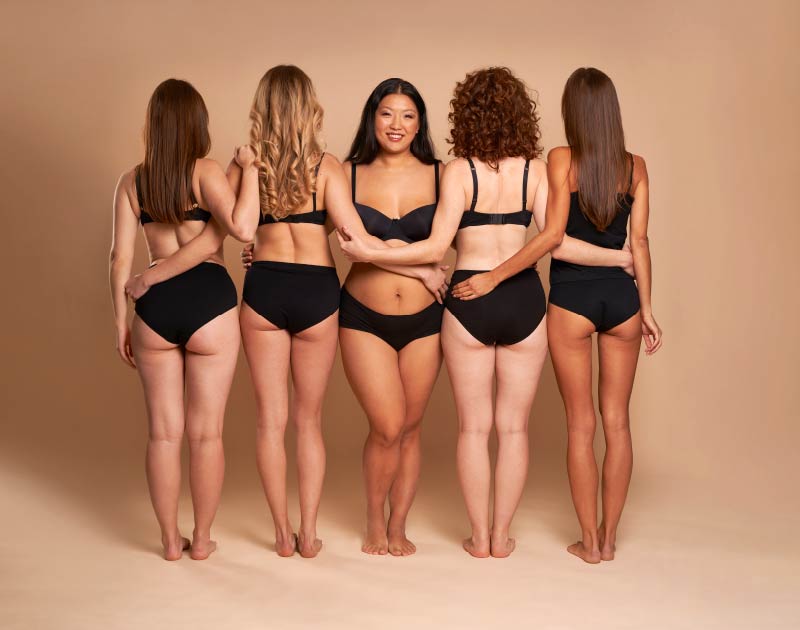
Out of Date Anthropometric Data?
Why is it difficult to make clothes to fit well? One reason that has been given - and what is generally seen as the main reason- is that we lack current easily available anthropometric data. Since the beginning of Ready to Wear garment manufacturing the big challenge has been getting the necessary measurements of the general population. Historically it has been easier to get anthropometric data for men because of the need to manufacture uniforms for the military. Conducting surveys to get measurements for a large pool of women was a different matter and, until recently, a very expensive and time-consuming process. This is changing due to the availability of 3D scanners so hopefully, this data will become readily available in the next few years. The anthropometric data we have is out of date because we are getting larger, and our body shape is changing since our diet and lifestyle habits have changed. Using current anthropometric data is definitely necessary and is the essential first step for garment manufacturers to make better fitting clothing, but ... but that is not the whole answer.
The Fit Model & Grading
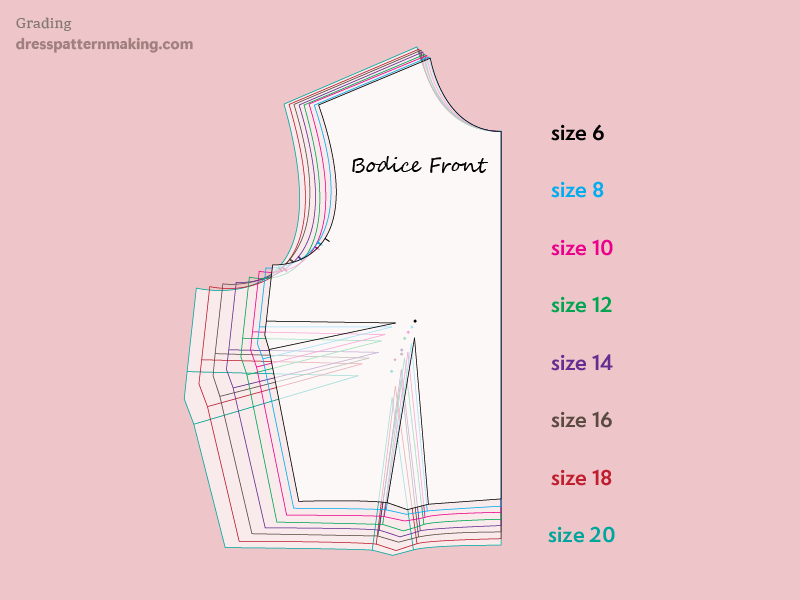
With the advent of Ready To Wear garments, the industry needed to a certain amount of sizes to make producing clothing profitable. Too few sizes meant a certain size would have to cover too much territory and some people would have an extremely poor fit. Too many sizes would make less profit. It seemed that this was easier to achieve in the earlier days of Ready to Wear garments as there seemed to be less variation in body weight and types, but over time our body shape has changed significantly.
With the changes to modern society that resulted in us becoming heavier with more range of body shapes. We have also become more multi-cultural, which means more ethnic diversity, making it even harder to make meaningful and relevant sizing that suits everyone. (Consider that the Standard Figure in Japan is quite different in a number of ways). Some labels have resorted to targeting certain body types and making clothing that fits just them. E.g. Hourglass, Rectangle, Diamond. Of course, this should be based on current anthropometric data for each of those body shapes. The current Grading process that is used in the Fashion Industry to create bigger and smaller sizes than their Fit Model (see the next heading Fit Model & Grading for an explanation) doesn't actually match any anthropometric data anyway (e.g. according to Sizing in Clothing by Woodhead Publishers, Side Length, Neck, and Shoulder Width do increase with size, yet most grading includes these increases). So not only is new data needed, but new methods of Grading are needed.
The ability to get one sizing system to fit all body shapes is probably unrealistic - therefore different labels need to target different parts of the market and therefore use different Fit Models (Rectangle Shape or Apple Shape rather than Hourglass).
Current Practice: Fit Models & Grading
- Most clothing brands make clothing is made to fit the Standard Woman. The standard woman has an hourglass shape, a B size bust cup and good posture. There is a certain different between her bust and waist measurements (called "the drop") and a similar difference between her waist and hip measurements. There is an assumed shoulder slope, shoulder length, neck size and proportion of the front arc to the back.
- Most fashion labels make their basic design to fit this Standard Woman - generally on a model they use in-house as their Fit Model. They perfect the design on this person, making sure she can bend, sit, walk, and move comfortably in the garment. The pattern they make for the prototype and their Fit Model is not for their smallest size - it is usually an Australian Size 10 or similar.
- The way they then make larger and smaller sizes of that pattern to make the smaller and larger garments on is through a process called Grading. The measurements of that Size 10 pattern are increased up and down at certain body points to make the smaller and larger sizes.
- There are certain assumptions made in the grading which are not backed up what Anthropometric data (e.g. length increases with size). E.g. As women put on weight, they don't tend to keep their B-size bust cup, they don't tend to need a longer side seam length, etc, they don't necessarily get larger in the neck area.
- This is all further complicated by the lack of recent Anthropometric data.
If you happen to have an hourglass figure in a size 10 with a B-size Bust Cup (and especially if you happen to be a Fit Model for a clothing label), you will find it easier to find clothes to fit. It is not a given that all clothes will fit you well - you may have poor posture, shoulders that slope more than usual, or squarer shoulders, It is obvious that the more you differ from the Standard Figure, the more difficult you will find it to buy ready to wear clothes that Fit Well. The many problems inherent in the above system. Some of them are: 1) Only a small percentage of women have the Hourglass shape (An American survey showed that only 8% of American Women are Hourglasses). 2) The sizing that results from Grading (the system of making the pattern pieces of the original size 10 pattern bigger/smaller to create different sizes) doesn't actually reflect the measurements of those larger sizes. 3) This is further complicated if you have a larger Bust Cup Size if you have poor posture. As women grow older their body shape changes and the way the weight is re-distributed isn't reflected in the way the Grading is done. 4) The Standard Figure also has some assumptions about the slope of the shoulders, the shoulder length, etc. The more parts of your body that differ to the Standard the harder it will be to find clothes that Fit Well.
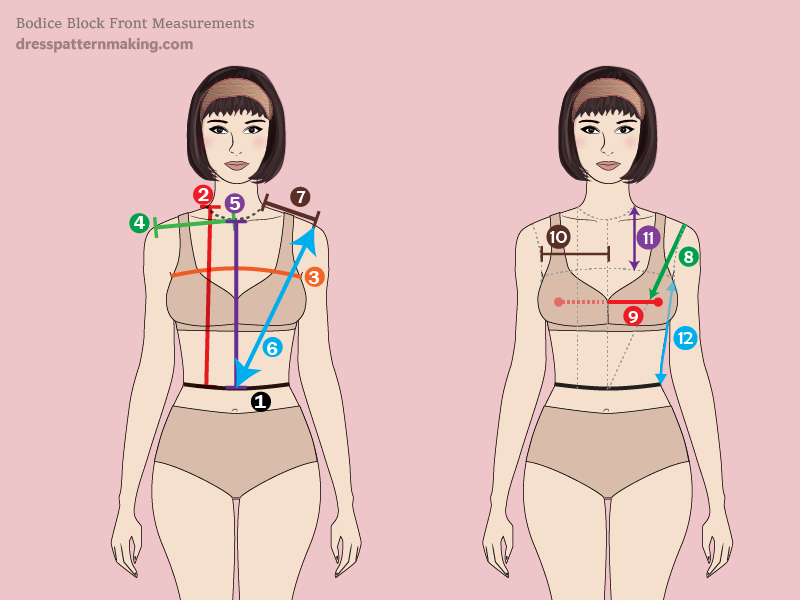
New Anthropometric Data
Recently the introduction of 3D scanning equipment has meant that collecting anthropometric data should be easier and cheaper, but at this point, there is still no readily available data for everyone. The companies that create these Pods make their business profit by selling the data on to fashion labels. I have written a short article about these 3D scanning booths that are found in shopping centres in Australia.
Even with up-to-date Anthropometric data...
In some books and articles that I have read, the suggestion is that with up-to-date anthropometric data, women will find it much easier to find well-fitting clothes. This will be true to an extent, but the bottom line is that some kind of 'averaging' is required to make clothing. Even if (to give one example), the new anthropometric data shows that there are more Apple shapes than Hourglass shapes, and therefore more companies target their clothing to that segment of the population, and therefore (the average) Apple shape person finds it easier to find clothing.... It will still be the Average Apple. If someone has much squarer shoulders than the average, or shoulders that slope more than the average or a larger bust cup than most clothing lines make their garments for... people with shapes that verge from the average will still have fitting issues.
Another example: One issue that has been mentioned as a problem is that most clothing is made for people with Hourglass Figures, and only 8% of people have that shape. If more clothing lines targeted other shapes, more people will find clothing to fit well. As I have an Hourglass figure, it would suggest that I should find it easier than most to find clothing to fit. But that's so not the case. The bottom line is that clothing cannot be made to perfectly fit the wide range of figure shapes, even within a certain body shape. Within a standard, there will be people on the fringes of that standard. The more your body differs from the mean, the harder it will be to find clothing that fits.
Body Shapes
As it happens I do have the Hourglass Shape, but it is a Bottom Hourglass rather than the 'Perfect' Hourglass. I find it extremely difficult to find clothes to fit. It is not only the Hourglass Shape that determines good fit. The hourglass in question is supposed to have B-bust-cup. I have a D Bust Cup, small waist, large thighs (which are termed "hips" but aren't really my hips), proportionally smaller upper-hips, small neck and square shoulders. I also have a Rounded Upper Back, forward-sloping shoulders and a Kyphotic Lordosic posture. Although some of my issues are Posture Problems (due to arthritis), they still need to be accounted if I want clothes that fit well. Given all of these fitting issues, even though I have (theoretically) the ''normal' body shape, I can't find clothes that fit well. What was always a challenge for businesses, has become greater in recent time as obesity increases and body shapes change; having the 'right' amount of clothing sizes to make a profitable business. Too few sizes, profit margin dwindles as the target audience is too small. Too many sizes and the profit margin dwindles as the cost increases. This last issue, however, could probably be addressed through niche markets - e.g. a label targeting Plus Sizes, another targeting Petite women. If good anthropometric data were available, it is conceivable that certain labels target certain body shapes (e.g. Hourglass, Inverted Hourglass, Rectangle, Apple etc).
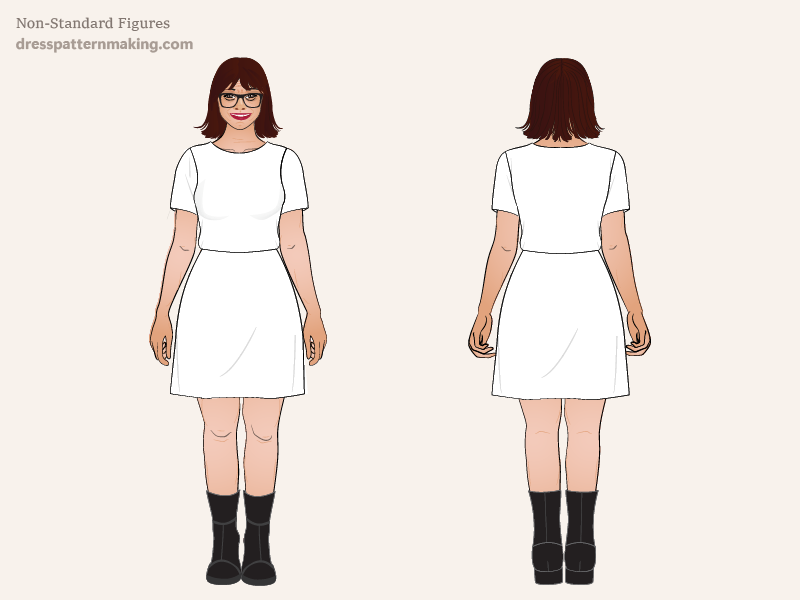
So what's the answer?
Of course, fashion labels must target a certain segment of the population, and different labels will target different segments. However, for those who still find it hard to find clothing to fit well, making custom-to-fit clothing (or having it made) is the best option. Not everyone can afford the time or the expense, so there will always be people who will have to make do. Let me repeat that: Even with current anthropometric data, getting ready to wear clothing to fit everyone really well is an unrealistic idea.
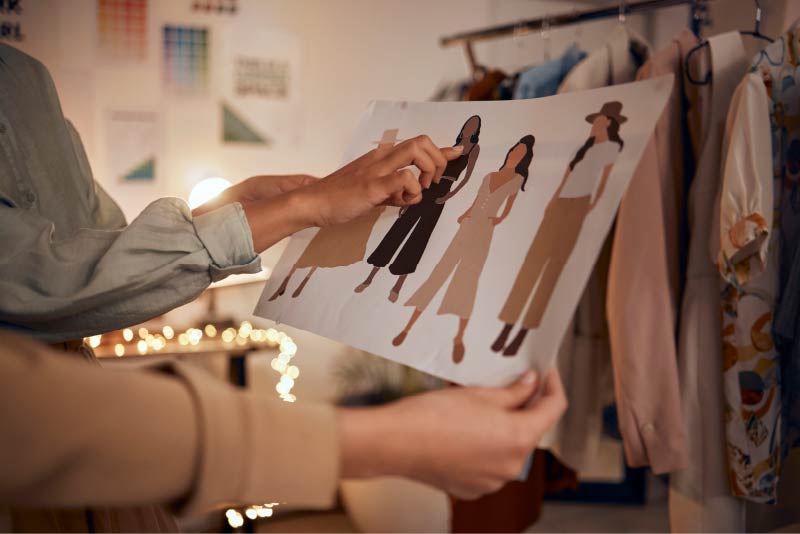
There will always be people who just have to Make Do with Ill Fitting Clothing. For those with sewing skills, it makes sense to learn to make your own block and make your own patterns. It takes some effort, but so does making adjustments to commercial patterns. There are some companies who offer customized patterns, but I am unsure exactly how customized they are. I have yet to look into this; when I do I will write an article about it. For myself, I'm glad that I somehow happened upon patternmaking years ago, as I will undoubtedly find it more difficult to find clothing that fits well as I age. Given my interest in patternmaking, I hope that I can eventually afford to purchase some software in which making my custom patterns will be easier.


